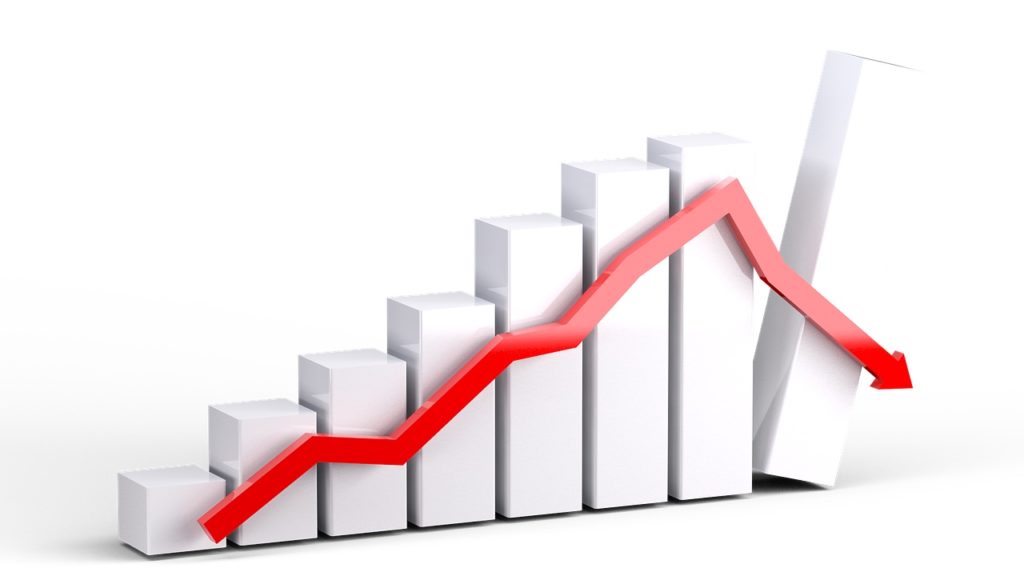Peter Schiff: More Economic Data Confirms a Recession

A lot of mainstream pundits concede that the US economy is heading for a recession as the Federal Reserve continues to crank up interest rates in its inflation fight. But as Peter Schiff explained in a recent podcast, there is plenty of data that indicates the economy is already in a recession.
It’s actually a stealth recession because nobody wants to acknowledge that it’s actually here.”
The fact that the US economy charted positive GDP growth in Q3 has also quieted concerns about a recession.
That’s also throwing everybody off. Remember, when we did have two negative quarters of GDP, they still denied that we were in a recession. So, now that they got a positive quarter, it makes the denial even more plausible.”
But as Peter pointed out, the reasons for the positive number are all temporary. For instance, the GDP got a boost from exporting oil out of the strategic reserve. At the current pace, the reserve will be empty sometime next year. That means oil prices may well explode.
The other factor was the lower trade deficit. In fact, if you ex-out shrinking trade deficit, GDP growth was negative. The falling trade deficit was a function of a strong dollar. We’re now seeing a weaker dollar. As Peter explained in a previous podcast, that does not bode well for import prices. The trade deficit will balloon again as the dollar weakens.
Also, the government uses a contrived number to deflate GDP. Peter said that number understates the actual increase in consumer prices.
That is exaggerating the economic growth. Because if you can make believe inflation is lower, then you simultaneously get to pretend that GDP growth is higher. And that’s another reason that the government has to lie about inflation. Because not only do they fool the public into thinking that inflation isn’t as bad as it is, but at the same time, they get a two-fer. They also get to lie to the public about how strong the economy is because they get to show a stronger GDP number than what they would show if they had an honest inflation number.”
There were several reports issued in recent days that scream recession.
The Kansas City Fed Manufacturing Index came in at -7 in October and -6 in November. The negative number means contraction. The Kansas City Fed said, “manufacturing activity declined at a similar pace compared to last month.”
Overall US industrial production, including manufacturing, mining and utility output, decreased by 0.1% in October. That compares with a downwardly revised 0.1% (from 0.4%) gain in September. The expectation was for a 0.2% gain in October.
One way to help alleviate the upward pressure on prices is to have more goods. But if we’re not producing more, then we’re not going to get more.”
Meanwhile, capacity utilization sank from 80.4 to 79.9.
That is a very weak number indicative of recession.”
Then we have the Philadelphia Fed Manufacturing Index. It was projected to come out at -7, a slight improvement over October’s -8.7. Instead, it plunged to -19.4. The Philadelphia Fed said, “The general activity index declined further, the new orders index remained negative, and the shipments index remained positive but low.”
Again – a negative number means contraction and is indicative of a recession.
Nobody thought it would be this negative because the economy continues to surprise people by being weaker than everybody expects. … The fact that all these manufacturing numbers are coming out negative indicates that it’s contracting, and again, this is complicating the Fed’s inflation fight because the one thing that would make that fight easier to win would be an increase in the supply of goods. Yet, all the manufacturing numbers are going in the wrong direction.”
Good News?
There was some good news — at least from a market perspective. Retail sales rose more than expected in October. The consensus estimate was for a 1% rise in retail sales. The number came in at 1.3%.
Some might say, “Peter, you’re wrong about the economy. Look at these strong retail sales numbers.”
Not so fast.
First, you have to remember that retail sales aren’t adjusted for inflation. Just because dollar widget sales increase doesn’t mean people bought more widgets. It could be that they bought fewer widgets but paid a lot more for them. Conversely, falling sales could reflect price drops and don’t necessarily mean people bought fewer widgets.
I think the main reason that retail sales are up is because prices are up. So again, this is not because people are buying more. This is just people paying more. And in fact, in many cases, they’re actually buying less. They’re just paying so much more that retail sales are up in dollars, but they’re down in volume.”
Second, we have to consider the question: where are consumers getting all of the extra money?
We know that a lot of it is coming from credit cards. Household debt set a new record in Q3.
That debt burden is going to weigh much heavier on debtors due to the rise in interest rates — not just the rise that has already occurred, but the rise that’s about to occur. And of course, as households are experiencing an increase in the cost of servicing their debt, they’re about to experience, or in some cases already are, a decrease in the value of those assets, especially the assets that are levered and on collateral against their debt – their homes.”
With home prices falling, people will not be able to easily tap into home equity to make ends meet.
That was a lifeline that in previous recessions homeowners could take advantage of. Well, this time, they’re not going to be able to take advantage of it.”
In this podcast, Peter also talks about the Republicans gaining control of the House, the FTX Ponzi scheme, and the decline of bitcoin.
Call 1-888-GOLD-160 and speak with a Precious Metals Specialist today!
Buka akaun dagangan patuh syariah anda di Weltrade.
Source link







